Everglades National Park Adventure: An Ultimate Guide
Introduction to Everglades National Park Adventure
The Everglades National Park Adventure is an unforgettable experience. The Everglades National Park is an unparalleled natural wonder located in the southern tip of Florida, USA. Spanning over 1.5 million acres, this vast expanse of subtropical wilderness offers a unique habitat teeming with diverse wildlife, lush vegetation, and serene waterways. As one of the largest wetlands in the world, it is a sanctuary for numerous endangered species and provides an unmatched experience for nature enthusiasts, adventure seekers, and wildlife photographers alike.
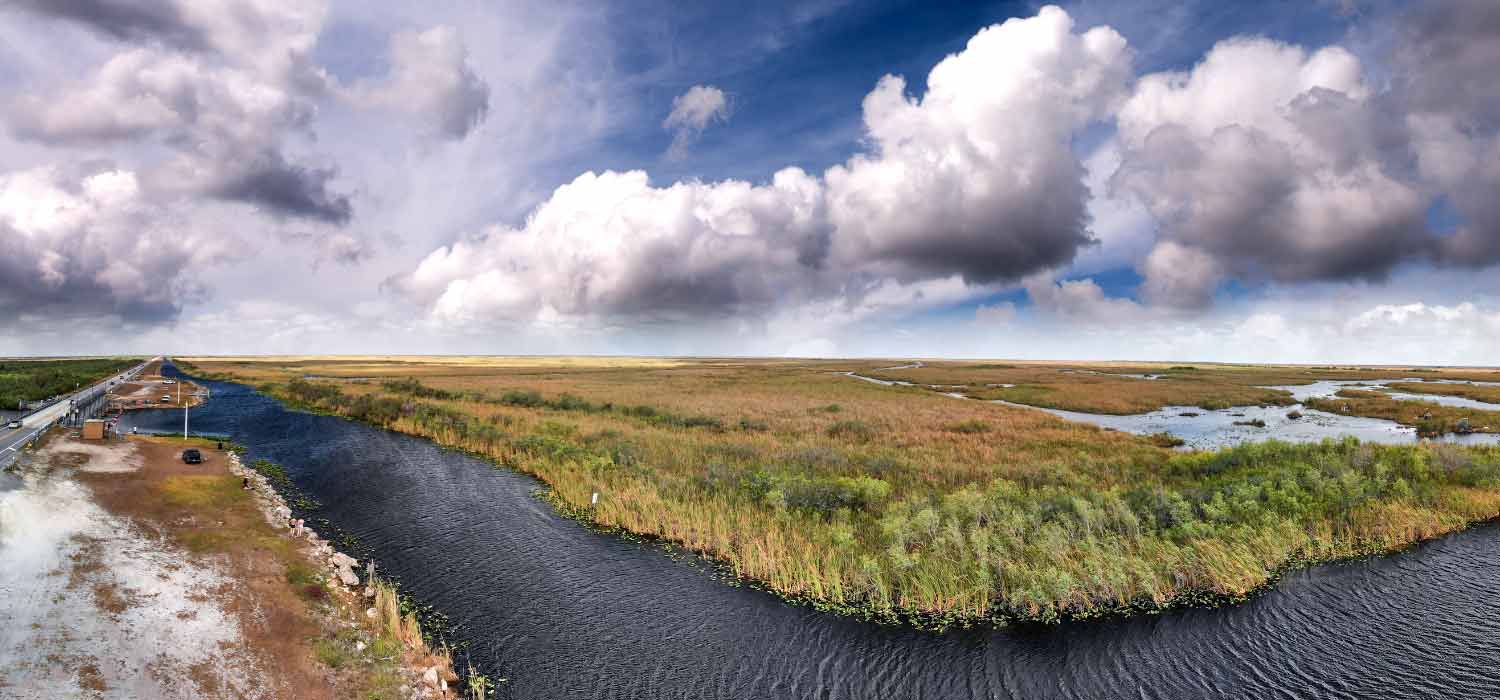
History and Significance
Established in 1947, the Everglades National Park was created to protect the delicate ecosystem from urban development and agricultural encroachment. Recognized as a UNESCO World Heritage Site, a Wetland of International Importance, and a Biosphere Reserve, the park holds significant ecological importance. The Everglades National Park adventure is home to rare and endangered species such as the Florida panther, American crocodile, and West Indian manatee. The park’s unique landscape of sawgrass marshes, mangrove forests, and hardwood hammocks showcases the diverse beauty of the region.
Planning Your Visit: Everglades National Park Adventure
Best Time to Visit
The optimal time to visit the Everglades is during the dry season, which runs from November to April. During this period, the weather is cooler, mosquitoes are less prevalent, and wildlife is more concentrated around water sources, making it easier to spot them. The wet season, from May to October, brings higher temperatures, humidity, and frequent thunderstorms, but also the lushest scenery.
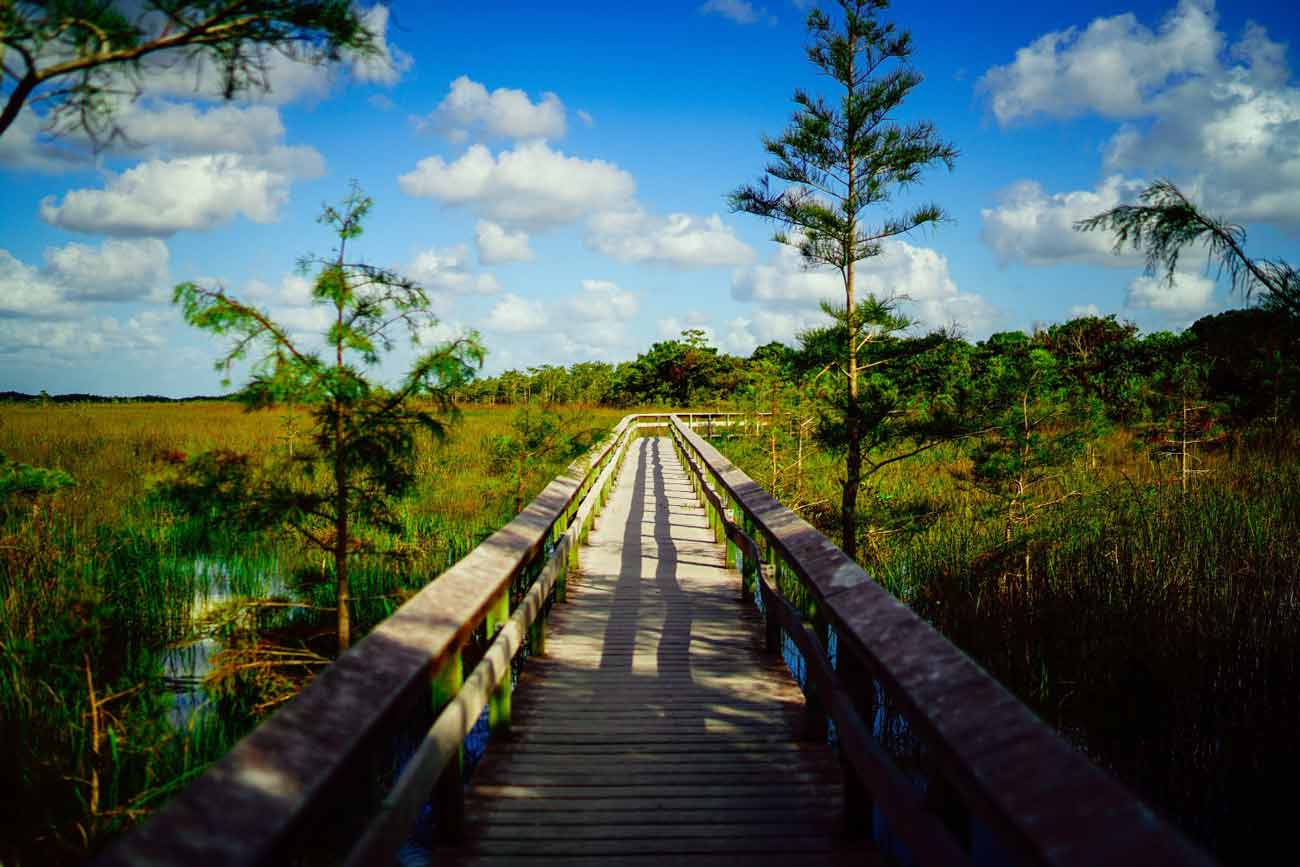
How to Get There
The Everglades National Park can be accessed through several entrances: the Shark Valley Entrance near Miami, the Ernest F. Coe Visitor Center near Homestead, and the Gulf Coast Visitor Center in Everglades City. Each entrance offers unique perspectives and opportunities to explore different areas of the park. It is advisable to plan your route in advance and check for any seasonal road closures or park alerts.
Top Activities and Attractions: Everglades National Park Adventure
1. Wildlife Viewing
The Everglades National Park adventure is a haven for wildlife enthusiasts. The park is home to a myriad of species, including over 350 bird species, 40 mammal species, and 50 reptile species. Key spots for wildlife observation include:
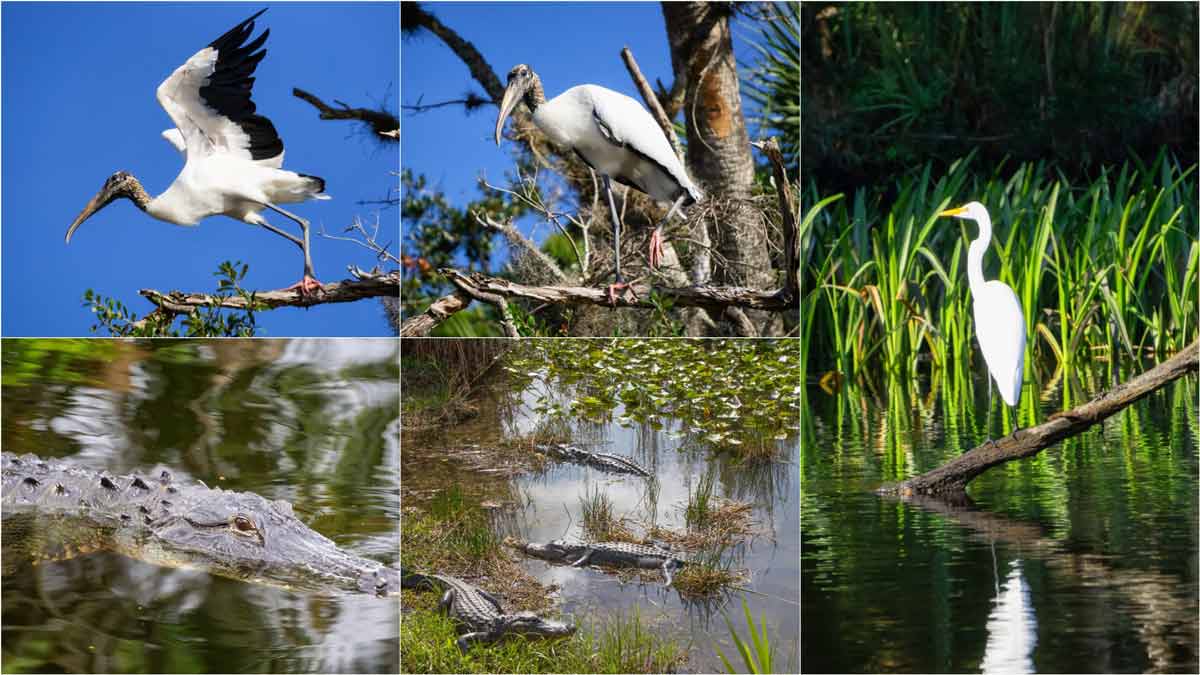
Anhinga Trail
Wander along this trail, just steps away from the Royal Palm Visitor Center, and you might catch the elegant anhinga bird drying its wings in the sun. The trail is alive with the sounds of nature, as alligators bask on the banks and turtles glide through the water.
Shark Valley
Not just a haven for alligators, Shark Valley is a birder’s paradise, where you might spot the rare snail kite circling overhead. The 65-foot observation tower is your gateway to a stunning 360-degree view, revealing the vastness and beauty of the Everglades.
Eco Pond
Moments from the Flamingo Visitor Center, Eco Pond is a mosaic of life. As the sun sets, the pond becomes a theater of colors with roseate spoonbills and egrets reflecting in the calm waters, creating a perfect backdrop for photographers and nature lovers alike.
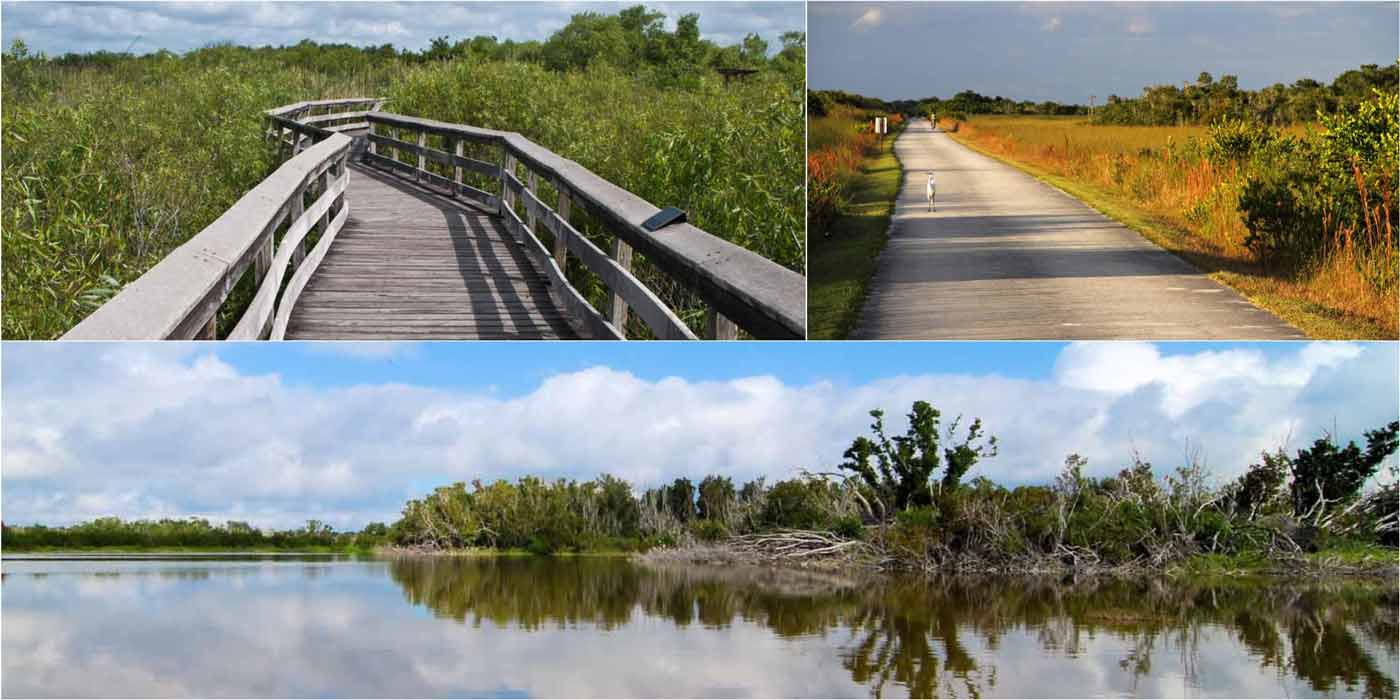
2. Airboat Tours
Imagine yourself aboard an airboat, the wind in your hair as you glide over the Everglades’ glassy waters during your Everglades National Park adventure. These unique, flat-bottomed boats are propelled by powerful propellers, cutting through the water and weaving through the dense marsh vegetation. Airboat tours, offered by a variety of operators just outside the park’s embrace, are your ticket to an electrifying exploration of this natural wonderland.
As you embark on this adventure, the airboat’s roar fades into the background, replaced by the sounds of the wilderness. Watch in awe as alligators slip silently into the water, herons take to the sky, and the Everglades come alive around you. This is more than a tour; The Everglades National Park adventure is an immersive experience that brings you face-to-face with the park’s diverse inhabitants.
Prepare to be captivated by the stories your guide shares about the ecosystem, and keep your camera ready for those once-in-a-lifetime wildlife sightings. An airboat tour is not just a trip through the Everglades; it’s a journey into the heart of Florida’s untamed beauty.
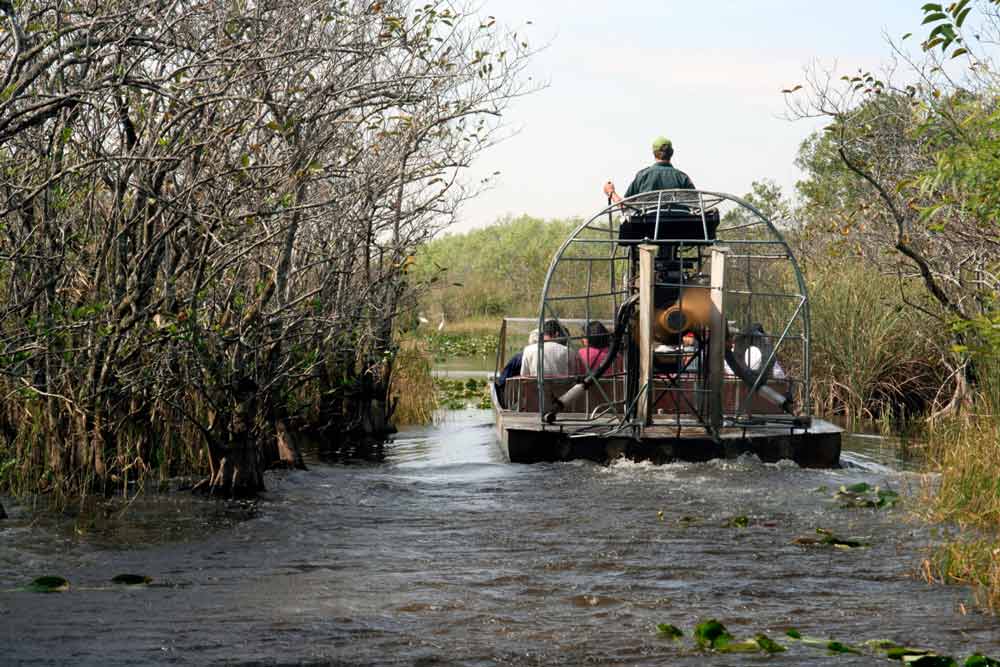
3. Canoeing and Kayaking
Picture this: you’re silently slicing through the water during your Everglades National Park adventure, the rhythm of your paddle the only sound. The Nine Mile Pond Canoe Trail beckons with its winding path through dense mangroves, where the air is thick with mystery. Hell’s Bay Canoe Trail is no less dramatic, with its sawgrass marshes that stretch to the horizon, hiding secrets only the local wildlife knows.
Here, every stroke takes you deeper into the Everglades’ soul, where manatees might surface beside your kayak, and the piercing eyes of a lurking alligator could meet yours. It’s not just a paddle; it’s a passage into the untamed heart of Florida, a chance to touch the wild that’s as real as the sweat on your brow and the calluses in your hands.
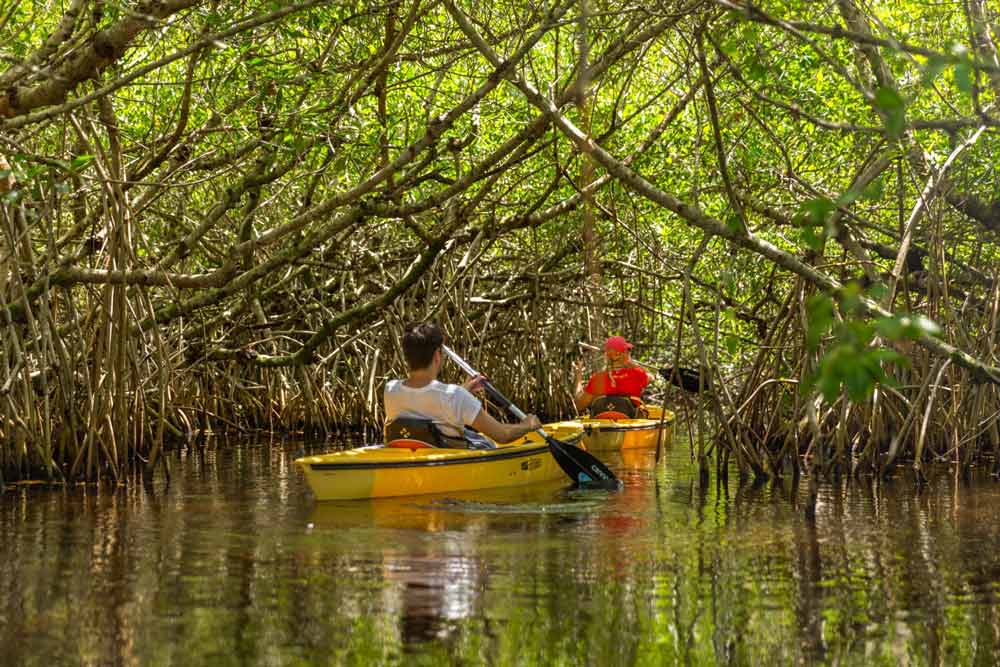
4. Hiking Trails
The Everglades National Park adventure includes numerous hiking trails that cater to all levels of adventurers. Some notable trails include:
Gumbo Limbo Trail
This inviting path is a gentle journey through a canopy of gumbo limbo trees, their peeling bark like sunburnt skin. The air is rich with the scent of tropical flora, and the dappled light creates a tapestry of shadows on the trail.
Pa-hay-okee Overlook
Step onto this boardwalk as the day wanes and watch the sky set the “River of Grass” ablaze with colors. The sunset here is not just a visual treat; it’s a moment of reflection, a daily masterpiece painted across the heavens.
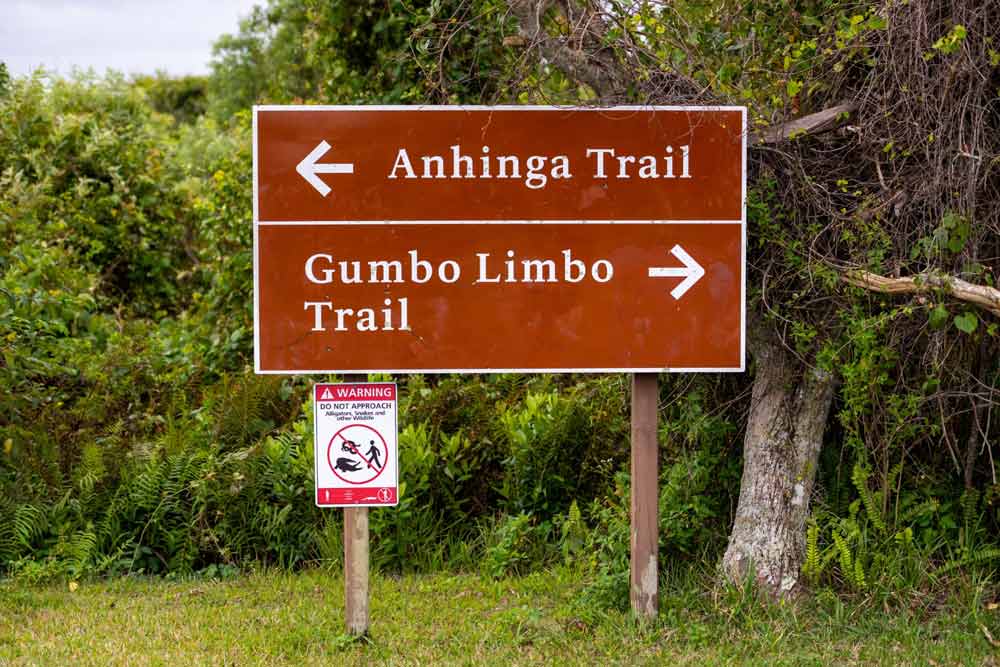
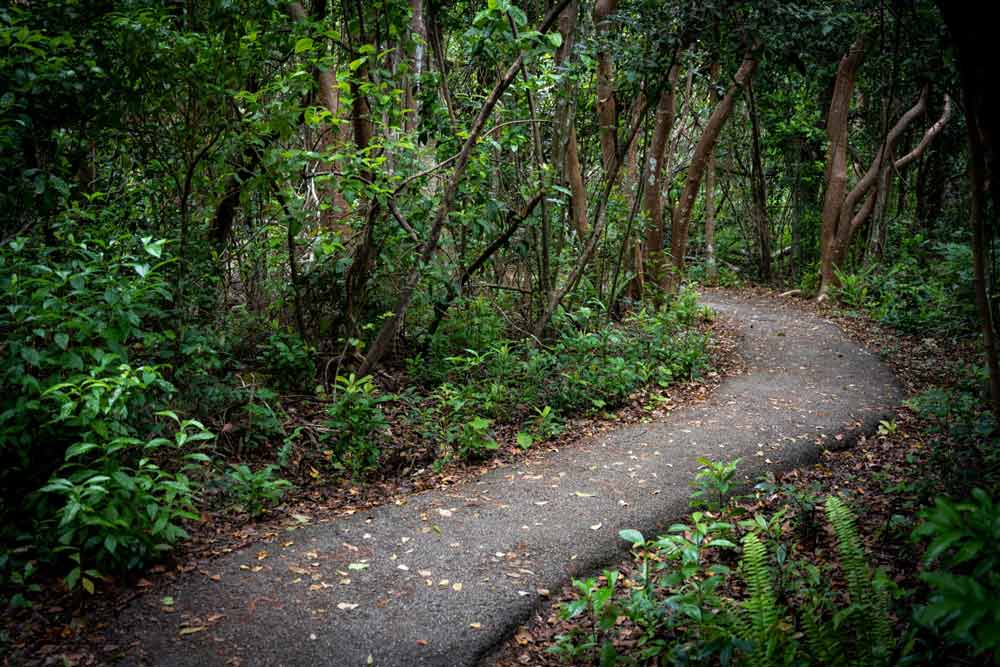
Old Ingraham Highway
Trek along this 11-mile trail and traverse a mosaic of ecosystems. From the whispering pinelands to the waterlogged sloughs, each step is an opportunity to discover the hidden enclaves of wildlife that call this place home.
5. Biking
Imagine yourself pedaling along the Shark Valley Tram Road, a 15-mile loop where each turn brings a new discovery. During Everglades National Park adventure, cyclists become part of the landscape, moving at the pace of the park itself. Rent a bike from the Shark Valley Visitor Center or bring your own, and set off on a journey where the hum of the tires on the path harmonizes with the calls of the wild.
As you cycle, you might pause to watch an alligator bask in the sun or a group of ibises take flight. The loop is a stage for the Everglades’ daily drama, where the thrill of spotting wildlife is as real as the breeze against your skin. It’s not just a bike ride; it’s a way to connect with the park’s pulse, to feel its rhythm, and to witness nature’s uninterrupted spectacle.
6. Camping
For those looking to extend their Everglades National Park adventure, camping in the Everglades is a memorable experience. The park offers both frontcountry and backcountry camping options. Flamingo Campground and Long Pine Key Campground provide amenities such as restrooms, showers, and picnic areas. Backcountry camping, accessible by boat or kayak, offers a more primitive and secluded experience, perfect for those seeking solitude in nature.
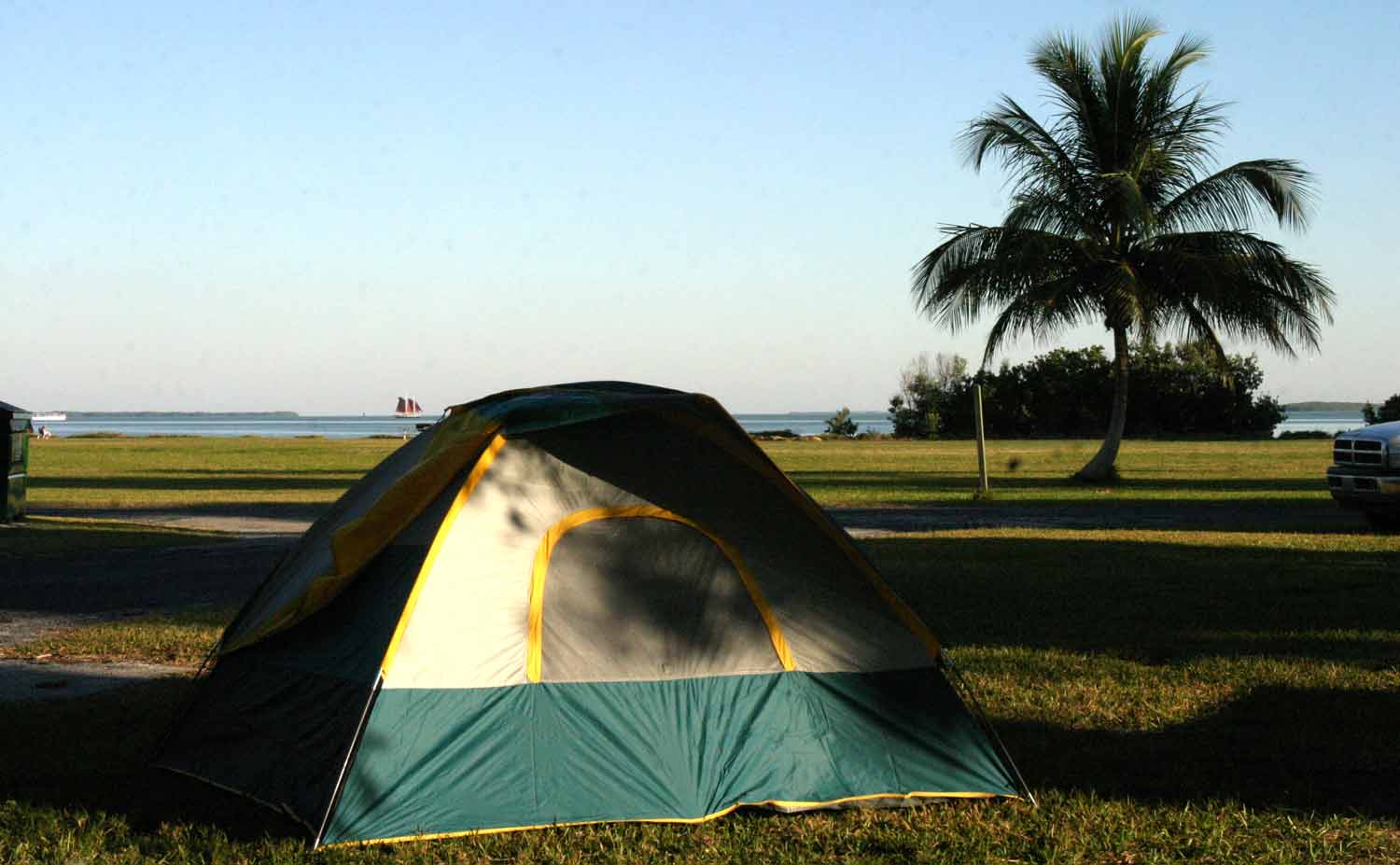
Everglades National Park Regulations
Protecting Coral Reefs: Sunscreen and Safety
The park encourages visitors to use reef-friendly sunscreen to protect our delicate coral ecosystems. Additionally, stay informed about the risks of the West Nile Virus and take necessary precautions to safeguard your health.
Respecting Laws and Policies
The Everglades is governed by the Code of Federal Regulations, and specific park needs are addressed in the Superintendent’s Compendium. While firearms are permitted within the park in accordance with laws, they are not allowed in facilities marked with signs indicating prohibition.
Wilderness Trip Planning: Do’s and Don’ts
When planning a wilderness trip, remember that clearing vegetation or camping in the interior is prohibited. To preserve the park’s structures, do not drive nails or stakes into chickees or platforms. Always use free-standing tents for your camping needs.
Comprehensive Regulations for Conservation
The Superintendent’s Compendium is your go-to resource for detailed regulations. It covers the preservation of natural, cultural, and archaeological resources, wildlife protection, fishing, camping, fire management, sanitation, refuse disposal, and pet policies.
Conservation Efforts
The Everglades, a tapestry of life, is under siege from threats like habitat destruction, the insidious creep of pollution, and the silent invasion of species like the Burmese python. But hope is not lost. Tireless conservation efforts are underway to mend the natural water flow, to seek out and remove these unwelcome invaders, and to shield the homes of those on the brink of vanishing.
As a visitor, your role is pivotal. Embrace the park’s guidelines, lend a hand in volunteer programs, or simply tread lightly upon the earth, leaving no trace of your passage. Each action, each choice, contributes to the legacy of the Everglades, ensuring its whispers and roars continue for generations to come.
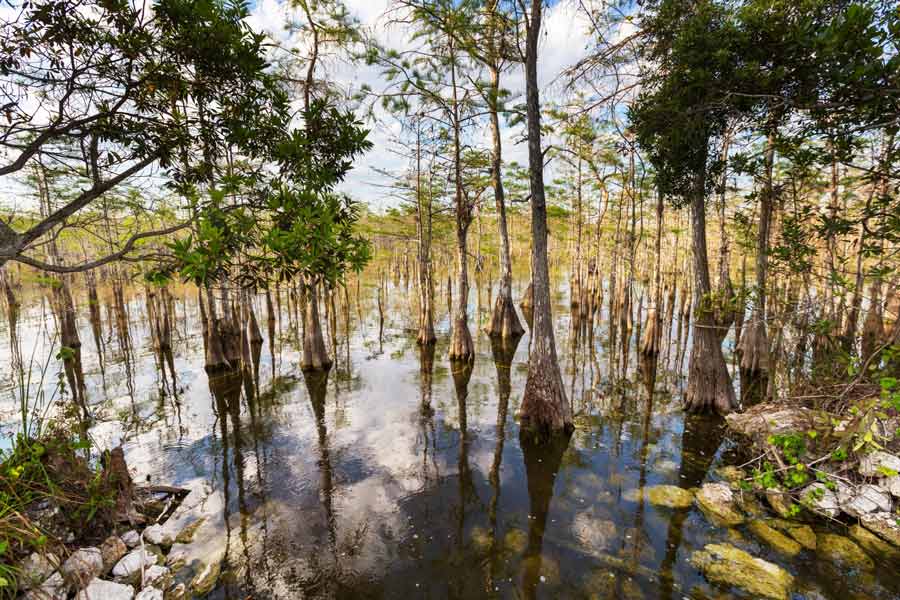
Conclusion
As the sun dips below the horizon, painting the sky with strokes of fiery oranges and pinks, the Everglades National Park stands as a testament to nature’s grandeur. Here, every airboat ride is a heart-racing voyage into the wild, every canoe trip a serene odyssey through liquid lanes of wonder. This vast mosaic of life invites souls from all walks to witness its splendor, to listen to its ancient whispers, and to leave forever changed.
In this corner of the world, where life burgeons in every nook, each visit is a promise of memories etched deep within the heart. The Everglades doesn’t just offer an escape; it offers a journey into the very essence of our planet’s beauty and biodiversity. To step into this park is to step into a living, breathing story—one where you are not merely an observer, but a part of its unfolding narrative.
So come, answer the call of the wild, and immerse yourself in an experience that transcends the ordinary. The Everglades awaits, not just as a destination, but as an adventure that will echo in your spirit long after you’ve returned to the world beyond its borders.
Frequently Asked Questions (FAQs)
The best time to visit is during the dry season from November to April.
You can access the park through the Shark Valley Entrance (near Miami), Ernest F. Coe Visitor Center (near Homestead), and Gulf Coast Visitor Center (in Everglades City).
Top activities include wildlife viewing, airboat tours, canoeing and kayaking, hiking, biking, and camping.
You may see species like the Florida panther, American crocodile, West Indian manatee, alligators, and various bird species.
Yes, ongoing efforts address habitat destruction, pollution, and invasive species. Visitors can help by following park guidelines and participating in volunteer programs.
Key regulations include using reef-friendly sunscreen, adhering to firearm restrictions in marked facilities, and following guidelines on camping and vegetation protection.
Airboat tours are available just outside the park boundaries, offering a unique way to explore the Everglades.
Yes, there are frontcountry campgrounds like Flamingo and Long Pine Key, as well as backcountry camping accessible by boat or kayak.
Bring sunscreen, insect repellent, water, snacks, appropriate clothing, binoculars, a camera, and park maps.
